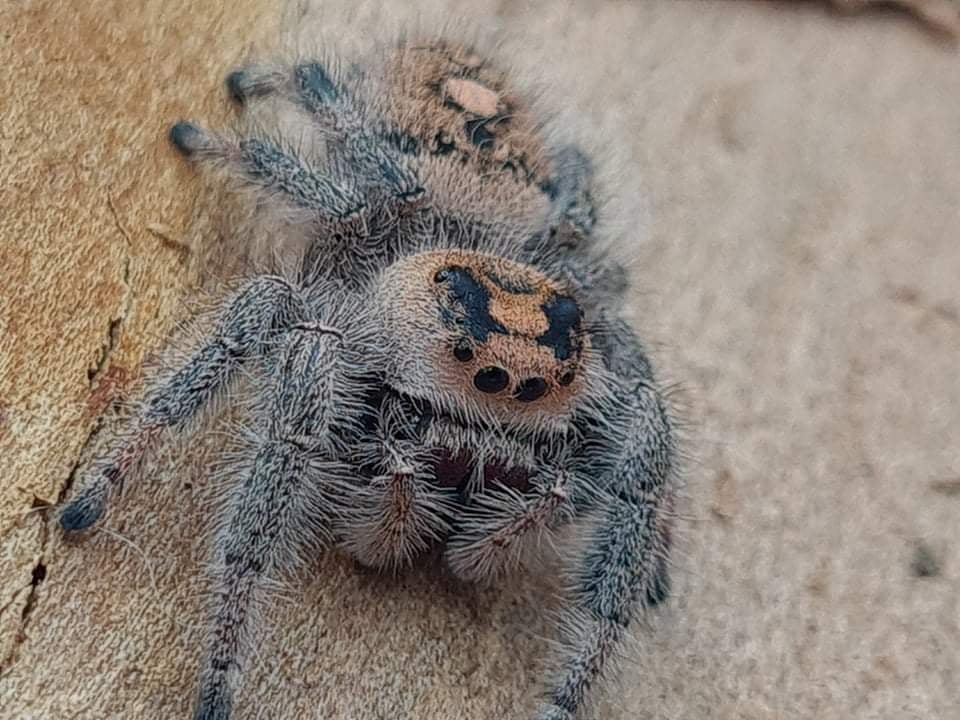Marvellous Mantis Uk
Phidippus regius. (Regal jumping spider)
Phidippus regius. (Regal jumping spider)
Couldn't load pickup availability
Feeding
you can feed your jumping spider every 2-3 days, some spiders may eat more or less frequently. a hungry spider will have a flat abdomen, while a full spider will have a plump abdomen.
You can tell its time to move up to bigger prey because your spider will catch a second fly while the first is still in its mouth.
Do Not feed if your your spider has encased it's self in thick web sack as it is most likely due to moult
Housing
Size
Males 6mm - 18mm, females 7mm - 22mm
Sexing
Males are usually black and white with alternating fringes on the first pair of legs, their chelicerae or fangs turn blue or green. Females can be orange, red, brown, grey or white, their chelicerae or fangs are pink.
Moulting
Phidippus regius, or regal jumping spiders, typically molt every 3–4 weeks, but the time between molts can increase after the 7th instar. The entire molting process, including preparation and recovery, can take up to two weeks, depending on the spider's age and developmental stage.
Avoid disturbing: Don't touch or move the spider during or right after molting. Disturbing it can cause it to freeze, fall, or move in a way that could harm it.
Remove feeders: Remove any feeders that might eat the spider or startle it.
Shine a light: Shine a light on the spider's hammock to check on it without interfering.
Signs that your spider is about to molt include: Not moving much, Eating less than usual or not eating at all, and Bald spots.
mist the jumping spider twice a day
Share


